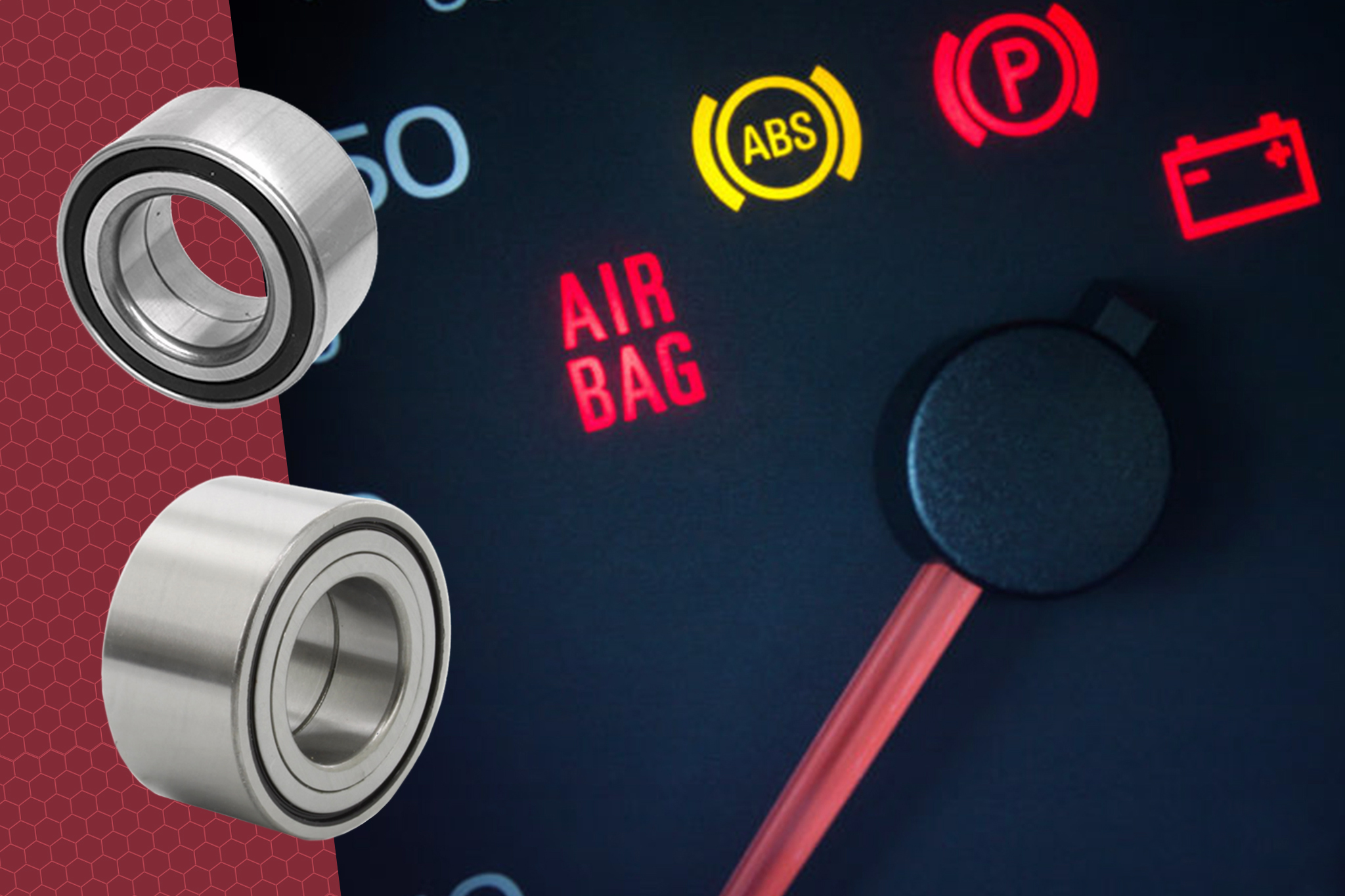
What happens when you replace a noisy wheel bearing, but spot that the ABS brake light is on? The next step would be to inspect ABS brake sensors, but the real issue arises when the sensors and wires aren’t damaged so you can’t detect the problem. The solution is simple – the wheel bearing put in has been installed backwards, so the encoder is facing the bulb instead of the ABS sensor.
Difference between old and new ABS pickup rings and encoders
If you consider old style ABS pickup rings, they usually had a ring of metal teeth (called pickup) pressed on to the axle, hub, or rotor. Each of the teeth is spaced uniformly around the ring. An ABS sensor mounted on the edge, counts the spaces as the ring spins, if any of the teeth are damaged or missing, the ABS brake light switches on, so you know there is a problem.
Nowadays, the system of ABS bearings is slightly different as it consists of a magnetic encoder incorporated into the wheel bearing, so if it is installed backwards, the ABS light is on. This means you will need to replace the wheel bearing once again, as it is unlikely that you can take it out without causing damage.
Steer clear of magnets
Please bear in mind that wheel bearings with magnetic encoders should be kept away from all magnets, especially powerful ones found in speakers. Magnets damage the encoder ring, a small pocket screwdriver magnet is enough to cause harm if it gets too close. Some car manufacturers make a sophisticated tool that checks the encoder for damage before installation – it can save you a lot of trouble.
Check the metal ring thoroughly
If you have the old style ABS brakes with the metal ring, there is a chance the ring has been damaged when the wheel bearing was replaced, or the sensor hasn’t been installed properly. Check the sensors for buildup like road grime, axle grease etc. as debris can interfere with the operation of the ABS sensor. If you find any obstructions, gently wipe it off with a shop towel. Avoid using any harsh chemicals like brake clean or carburetor cleaner, as they can damage the sensor or wires. The metal pickup ring needs to be inspected carefully – check for missing, broken, or misaligned teeth, or cracks in the pickup ring. If the sensors and ring look fine, you might have ended up with a bad sensor.
Keep these points in mind while installing ABS bearings!